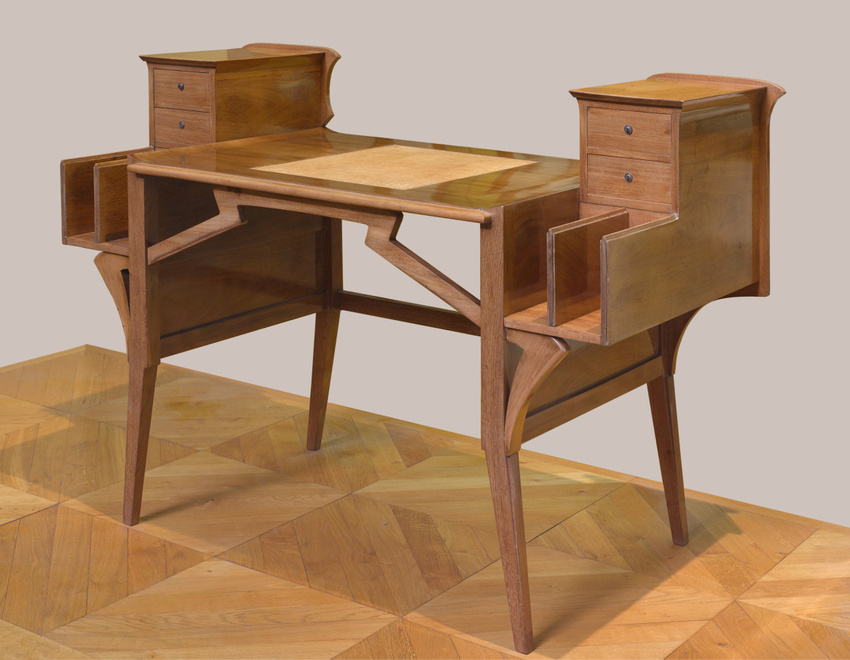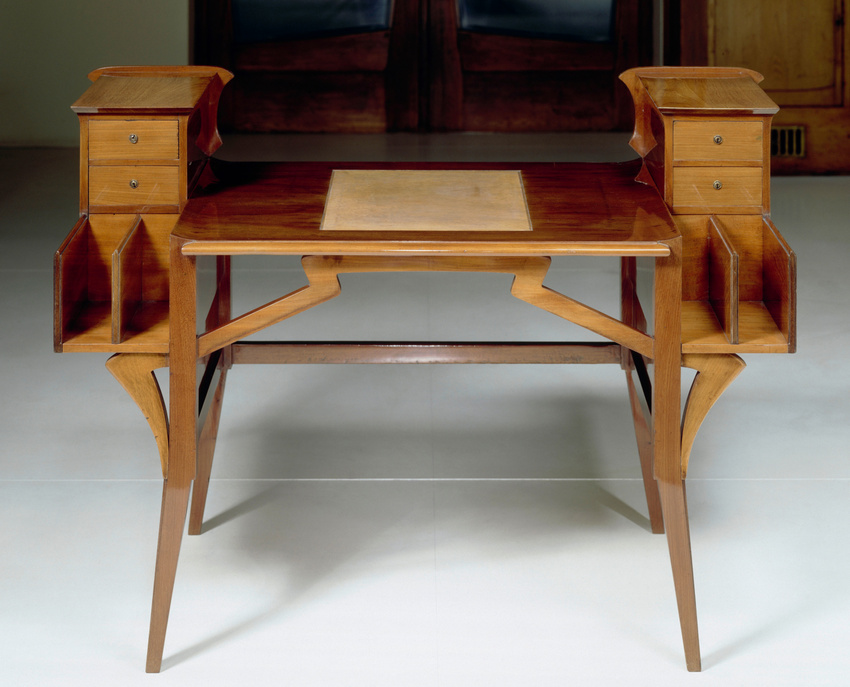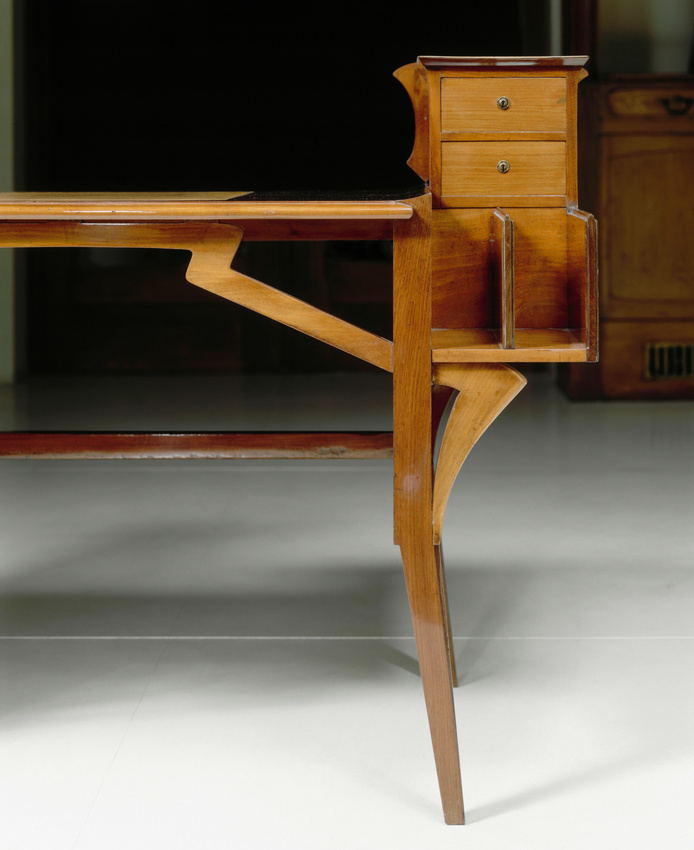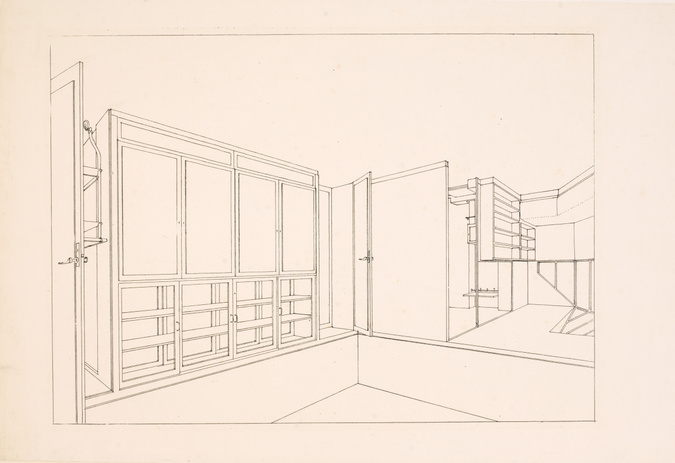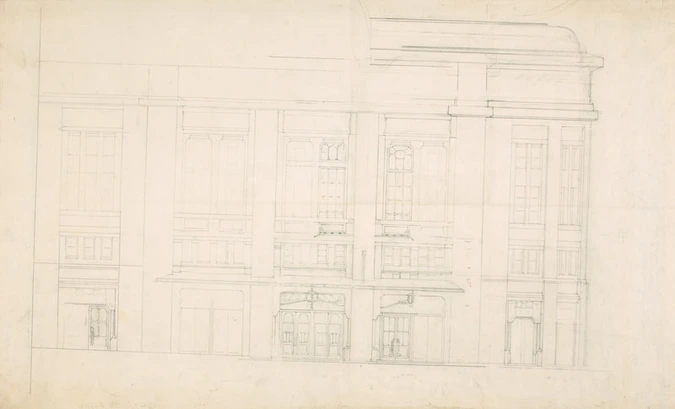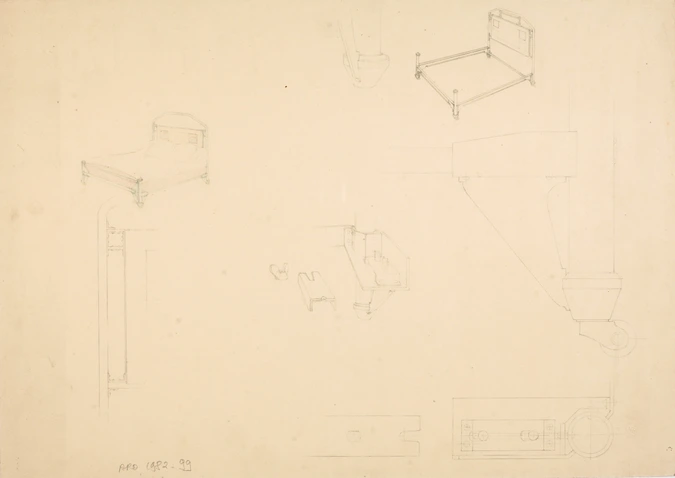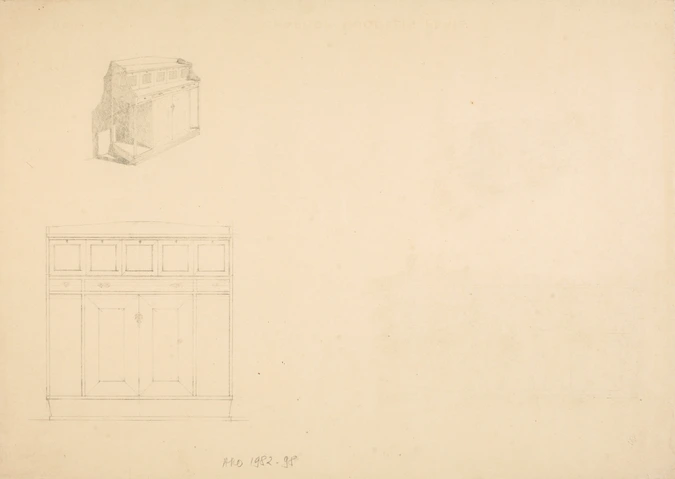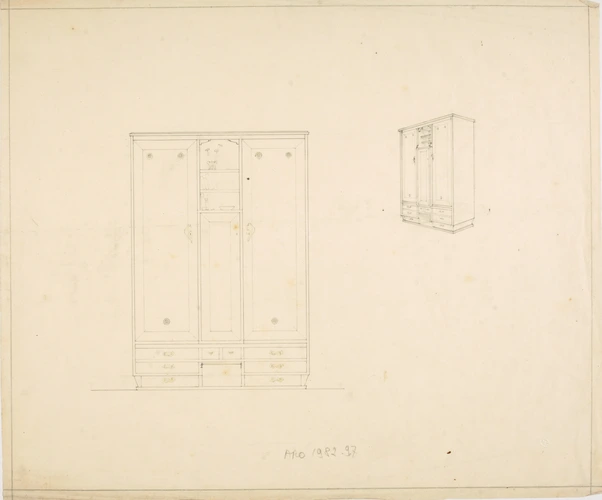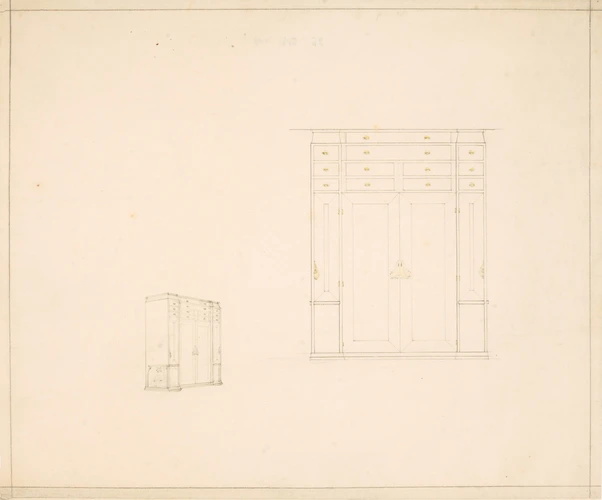Ecritoire de dame
The catalogue of the "Industries of Art and Ornamentation" published by Henry van de Velde in Brussels in 1899 included a picture of this desk in its context, a boudoir entirely furnished by the artist. Obviously the photograph was taken inside a house or an apartment which was really lived in. No other example of the desk is known, which suggests that it could well be unique or at least that very few were made.
From a stylistic point of view, the desk belongs to the early years of van de Velde's furniture production. It was designed just after he had furnished his own house, the Bloemenwerf in Uccle (Belgium), in 1895-1896.
Like much of the furniture designed for the Bloemenwerf, the desk's fine, rigorous structure demonstrates the "functionalism" he was looking for.
The desk owes its shape to the assemblage of the component parts, which are devoid of all ornament. The influence of Japanese art is perceptible. Seen from the front, its incisive graphics are reminiscent of many Japanese prints. The desk top, the slightly splayed legs and the cross bar of the apron suggest a sketch of a torii, the ornamental portico traditionally built at the entrance to a Shintoist sanctuary.
On the other hand, the filing compartments and drawers on the side, by their almost rudimentary simplicity, suggest the creations of the Arts and Crafts movement which van de Velde held in very high esteem and which led to his conversion to the 'minor' arts.
